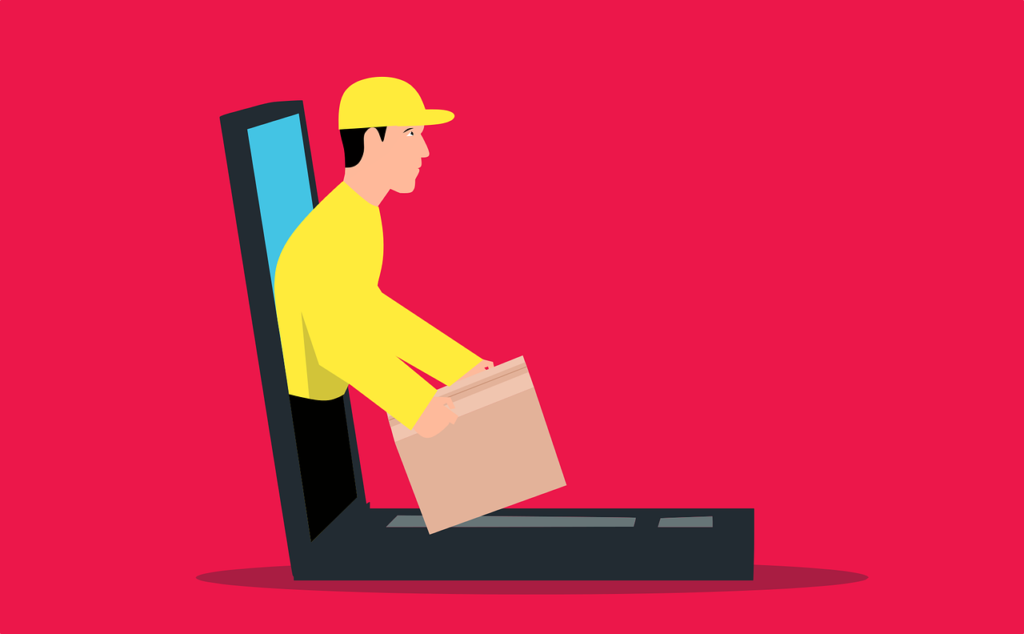A starter guide to dropshipping

You’ve undoubtedly heard of dropshipping, whether you’re wanting to get started in the eCommerce space or you’re already involved in it. Over the past few years, it has undoubtedly held its position as one of the most popular trending issues in the industry.
We’ll go over all the specifics of dropshipping in our dropshipping 101 guide, including everything you need to know before you launch your dropshipping brand.
What is dropshipping?
With dropshipping, you can sell goods online without worrying about fulfillment, storage, or shipping. Instead, as soon as an order is received, your manufacturer or supplier distributes the product straight to your consumer. implying that you won’t ever need to handle the merchandise or be concerned about running a warehouse.
Who is a dropshipper?
A person or company who sells goods without ever keeping them in stock is known as a dropshipper. Rather, the dropshipper buys the product from a third-party supplier and ships it straight to the customer upon receiving an order from a customer. Consequently, the merchandise is never seen or handled by the dropshipper.
How does dropshipping work?
A small initial investment can be made in an ecommerce business via dropshipping. You may start selling things right away and don’t need to invest in inventory or warehousing. There are a few stages required, though. This is an explanation of how dropshipping operates:
- Choose a niche: Selecting a niche for your dropshipping company is the first step. Anything from apparel to electronics to household items could fall under this category. Selecting a niche that both interests you and has a large pool of potential clients is crucial.
- Find a dropshipping supplier: After settling on a specialty, you must locate a dropshipping vendor. There are a lot of dropshipping vendors on the internet, so it’s critical to conduct due diligence and identify vendors who can offer premium goods and attentive customer support.
- Set up an online store: You may create an online store with Shopify. It’s simple to set up a professional-looking store and begin taking orders using Shopify.
- List the products on your store: After setting up your store, you must add products from your suppliers to it. This can be accomplished by manually adding products to your store or by importing products from the catalog of your provider.
- Market your store: After adding products to your store, you must advertise it. Social media, paid advertising, and search engine optimization (SEO) can all help with this.
- Receive an order: When a customer submits an order, you will need to place an order with your supplier. That’s what your dropshipping platform is for.
- Ship the order: The order will be shipped straight to the customer by your supplier. You won’t have any responsibility for the shipping procedure.
- Provide customer service: You will have to assist the customer with customer support if there are any issues with the order. This can entail giving the buyer a refund or sending a replacement item.
How to find good dropshipping suppliers?
The following advice might help you locate reliable dropshipping vendors:
- Do your research: There are a lot of dropshipping vendors on the internet, so it’s critical to conduct due diligence and select one that will work well for your company. Take into account elements like the choice of products, cost, terms of delivery, and customer support.
- Read reviews: After you’ve selected a few, go over other dropshippers’ evaluations of the provider. This will offer you a decent indication of what to anticipate in terms of customer service, shipping durations, and product quality.
- Contact the supplier: Once you’ve narrowed down your list of potential suppliers, get in touch with each one immediately to discuss your needs and obtain further details. This will enable you to determine more accurately if they are a suitable fit for your company.
- Start small: It’s a good idea to work with a few vendors and start small when you initially start out. By doing this, you’ll reduce your risks and gain more insight into the dropshipping procedure.
- Be patient: Locating the top dropshipping vendors requires time. If you don’t immediately locate the one, don’t give up. You’ll eventually locate a source who satisfies your needs if you keep looking.
Dropshipping Advantages
- Low startup costs: You can start an ecommerce store without having to buy inventory in advance, giving you additional cash flow flexibility. You handle product marketing, and your suppliers handle the costs of goods management and storage.
- Less space needed: Suppliers handle warehousing, so you don’t need to rent storage space or pack your garage full of merchandise.
- Expansive product selection: You are able to sell as many things as you like because you are not constrained by geography or physical storage capacity. A virtually limitless product pool is also at your disposal, allowing you to test products without having to commit a significant amount of money to inventories.
- Operate from anywhere: Learning how to launch a business typically requires you to dedicate yourself to a single area. All you need is internet access to run your dropshipping business without having a physical connection to your products.
- Automated workflows: Most of the daily work is automated once your store is operating. Order routing, inventory management, order tracking, and other tasks are automated by DSers.
- Scale efficiently: using fewer employees and fewer logistical challenges, you may expand your company swiftly using automation and supplier outsourcing.
Dropshipping Disadvantages
- High competition: Your product selection may become less distinctive if your dropshipping providers are serving numerous merchants concurrently. Because of this, it’s crucial to set yourself apart from the competition and develop an effective ecommerce marketing plan.
- Low margins: Low prices and slim profit margins are common in the dropshipping industry because of the low entry barrier and intense competition. You’ll need to figure out how to set your company apart, whether it’s through branding or customer support.
- Lack of quality control: It can be challenging to make sure that each unit fulfills your quality standards when you’re not the one handling the products directly. You’ll need to build trusting relationships with your suppliers and conduct thorough due diligence on them (or locate a database with a trustworthy vetting procedure).
- Supplier terms: Because your business depends on suppliers to manage inventory, packaging, and shipping, it is bound by the terms and conditions set forth by those suppliers. You won’t have as much control over criteria that can affect client happiness, such as order minimums, return/exchange policies, and other guidelines.
- Limited customization: If you purchase goods from a third-party source, you will have less control over the product’s appearance, manufacturing process, and branding (unless your supplier provides print-on-demand or white-labeling services). In a crowded market, it can be challenging to differentiate your product offering without customization.
- Customer service: It is your responsibility to fix a customer’s problem with a product they have received. If your provider is uncooperative or unresponsive, this can be a very frustrating process.
- Shipping considerations: You’re dealing with global suppliers; therefore, there will be a lot of variation in shipping charges and times. This may affect your capacity to provide clients with free and quick shipping, which is frequently a crucial component of ecommerce conversion rates.
Can anyone start a dropshipping business?
Dropshipping may or may not be a good fit for you, depending on your resources, expertise, and skill set. Here are some points to think about:
- Your skills and experience: Do you have experience in eCommerce or marketing? If not, dropshipping can be a steep learning curve.
- Your resources: Do you have the time and resources necessary to launch a dropshipping company? Dropshipping has the potential to be a lucrative business concept, but creating an effective business requires time and work.
- Your niche: Which goods or services are you hoping to market? Dropshipping is a viable choice for companies that offer high-margin, low-cost goods.
- Your competition: How much competition is there for the products you wish to sell in the dropshipping market? In a highly competitive market, you will need to figure out how to set your company apart.
- Your risk tolerance: Although dropshipping is a low-cost business strategy, there are still hazards associated with it, such as the possibility of shipment delays and poor customer service.
Make sure you know the hazards associated with dropshipping and conduct thorough research before deciding to undertake it. Dropshipping may be a successful business strategy if you’re prepared to put in the necessary effort.
How to make dropshipping profitable: 7 brief suggestions
Are you prepared to begin dropshipping now? Remember these pointers.
- Do your research – Spend some time learning about the latest trends in dropshipping products and the practices of other companies in your industry.
- Find a niche – To lessen competition and establish your store as the industry leader in a certain area, concentrate on a niche or specialized product. Even the most well-liked dropshipping items won’t guarantee success if the market is crowded out or the profit margin is low.
- Boost existing inventory – Experiment with new product categories and add goods to your current lineup. This helps you provide a wider range of products and provides you with useful information about what your clients desire.
- Sell print-on-demand merch – Create and market personalized branded products, such as phone covers, mugs, and t-shirts, without having to keep any inventory—a fantastic choice for companies that prioritise customer service.
- Prioritize customer satisfaction – Make every effort to guarantee that clients are satisfied with their purchases. Provide excellent customer support, accommodating return and exchange guidelines, and precise delivery schedules.
- Choose the right platform – With so many ecommerce systems available, it’s critical to select one that provides the functionality and assistance you require to expand your company. Seek out an ecommerce platform such as Shopify that has integrated dropshipping capabilities, such as order management tools and automated inventory adjustments.
- Invest in marketing – Spread the word about your company by experimenting with various marketing strategies. To expose your company to potential clients, consider influencer marketing, social media advertising, Google Ads, and other innovative techniques.

Dropshipping FAQ
Dropshipping is indeed entirely lawful. To be clear, you have the suppliers' consent to market their items. Make sure you follow the rules of internet sales tax and conduct ethical marketing activities.
Indeed, dropshipping is a fantastic alternative for novices because to its minimal risk and relative ease of setup. Since the supplier handles the administration and storage of the inventory, you may begin small. Also, it's simple to do competition and product research, giving you a head start. Following launch, you may experiment with various offerings, niches, and tactics (all at minimal cost) to identify a winning combination.
As a dropshipping company, you must strike a balance between expenses and income. Think about your marketing budget as well as your product's wholesale costs. Next, set your product prices so that your revenue exceeds your expenses. Achieving the ideal balance between margin and competitiveness requires that you simultaneously investigate the pricing of your rivals in order to obtain a fair range.
Conclusion
A fantastic approach to run your own business and collaborate with wonderful clients while minimizing costs and financial risk is through dropshipping. Because of its cheap cost, there is less danger to you personally and professionally. You can always make a rapid pivot, switching up your entire product range, or even launch a new firm, if something doesn’t quite work out. After all, dropshipping is a fantastic method to increase the range of products you provide, so the possibilities are endless. By using the strategies outlined in this article, you may develop and strengthen your brand in order to establish a connection with your target market, set yourself apart from the competition, and support the growth of your company. It’s difficult to refuse that!



1 Comment
Cedric Aumiller
December 5, 2023I am sure this paragraph has touched all the internet viewers, its
really really good post on building up new
webpage.